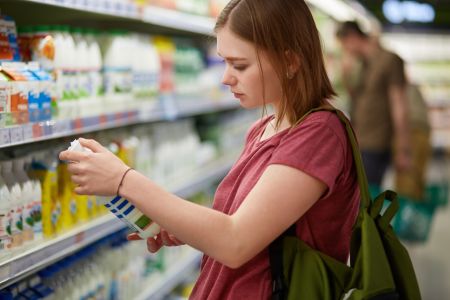The hot new thing in food is “Clean Labels” – – labeling you can read and supposedly know what’s in the product. Equally, it’s rumored the Easter Bunny and Santa are forming a heavy metal band and going on tour.
To set the table, as it were, clean labels are supposed to be “transparent” (another buzz word) to the consumer so (s)he knows what’s in the product. The following are two versions of the same ingredients:
Clean: Flour, Sugar, Salt, Malt, Baking Powder
Unclean(?): Ground Wheat Endosperm, Fructose or Glucose, Sodium Chloride (NaCl), Dried Germinated Cereal Grain, Dry Chemical Leavening Agent (carbonate or bicarbonate, acid, cornstarch)
OK. The clean label we buy. The other one: we call the Hazmat Team. That’s why food producers want the cleanest label possible.
When I’m not writing blogs, my day job is defending food companies in federal court class actions, doing food deals, and giving FDA regulatory advice. It’s that last one that intersects with clean labels.
A nutrition supplement producer called me saying their latest-to-be released product had a “clean” label except for one ingredient: esterified propoxylated glycerols. Not just unclean, positively scary. They told their attorneys that name would hugely harm sales. Their attorneys’ advice: “Life is hard, and then you die.” Hoping to avert death, they called me. I informed them that death is inevitable, but that I could certainly postpone it for them in this case.
The starting point: FDA law says that food labels must identify ingredients by their “common or usual name.” Esterified propoxylated glycerols is not that substance’s common or usual name. It doesn’t have a common or usual name. (I unearthed an obscure FDA ruling stating that they weren’t convinced it had a common or usual name.) So far so good. When there’s no “common or usual name,” it should be identified by words that “describe, in as simple and direct terms as possible, the basic nature of the food.” To solve this riddle, I unearthed esterified propoxylated glycerols’ manufacturing process and chemistry to determine it’s made from fractionated, processed, concentrated, filtered, plant oils and extracts. The Food Lawyers’ “clean labeling” translation: Call it “Filtered Vegetable Extract.” Voila. The nutrition supplement now has a clean label.
The client loved it. They told me: “This is great. We aren’t just using ‘vegetable extract,’ we’re using something much better – – filtered vegetable extract.” They fired their attorneys and hired The Food Lawyers®. Happy ending all around.
The moral of this story: Most people translate “clean labels” to mean “Natural” and/or “Organic” and/or “Healthy.” They don’t necessarily mean any of those things because “clean label” isn’t defined by FDA. Actually, sometimes, it means whatever the manufacturer wants it to mean.

